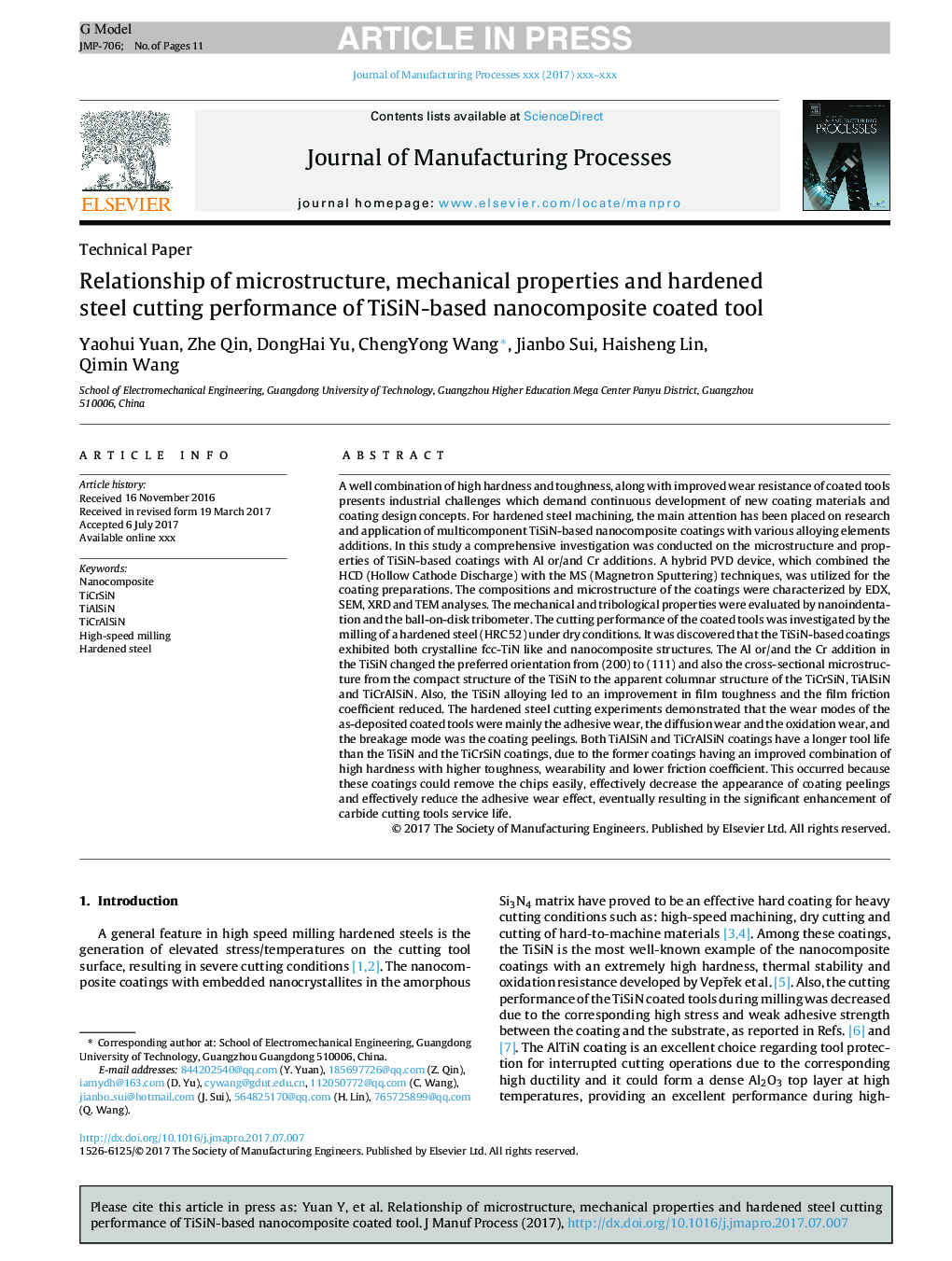| Article ID | Journal | Published Year | Pages | File Type |
|---|---|---|---|---|
| 5469355 | Journal of Manufacturing Processes | 2017 | 11 Pages |
Abstract
A well combination of high hardness and toughness, along with improved wear resistance of coated tools presents industrial challenges which demand continuous development of new coating materials and coating design concepts. For hardened steel machining, the main attention has been placed on research and application of multicomponent TiSiN-based nanocomposite coatings with various alloying elements additions. In this study a comprehensive investigation was conducted on the microstructure and properties of TiSiN-based coatings with Al or/and Cr additions. A hybrid PVD device, which combined the HCD (Hollow Cathode Discharge) with the MS (Magnetron Sputtering) techniques, was utilized for the coating preparations. The compositions and microstructure of the coatings were characterized by EDX, SEM, XRD and TEM analyses. The mechanical and tribological properties were evaluated by nanoindentation and the ball-on-disk tribometer. The cutting performance of the coated tools was investigated by the milling of a hardened steel (HRC 52) under dry conditions. It was discovered that the TiSiN-based coatings exhibited both crystalline fcc-TiN like and nanocomposite structures. The Al or/and the Cr addition in the TiSiN changed the preferred orientation from (200) to (111) and also the cross-sectional microstructure from the compact structure of the TiSiN to the apparent columnar structure of the TiCrSiN, TiAlSiN and TiCrAlSiN. Also, the TiSiN alloying led to an improvement in film toughness and the film friction coefficient reduced. The hardened steel cutting experiments demonstrated that the wear modes of the as-deposited coated tools were mainly the adhesive wear, the diffusion wear and the oxidation wear, and the breakage mode was the coating peelings. Both TiAlSiN and TiCrAlSiN coatings have a longer tool life than the TiSiN and the TiCrSiN coatings, due to the former coatings having an improved combination of high hardness with higher toughness, wearability and lower friction coefficient. This occurred because these coatings could remove the chips easily, effectively decrease the appearance of coating peelings and effectively reduce the adhesive wear effect, eventually resulting in the significant enhancement of carbide cutting tools service life.
Related Topics
Physical Sciences and Engineering
Engineering
Industrial and Manufacturing Engineering
Authors
Yaohui Yuan, Zhe Qin, DongHai Yu, ChengYong Wang, Jianbo Sui, Haisheng Lin, Qimin Wang,
